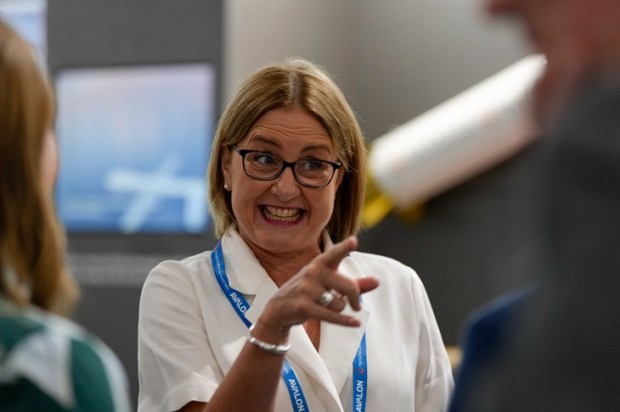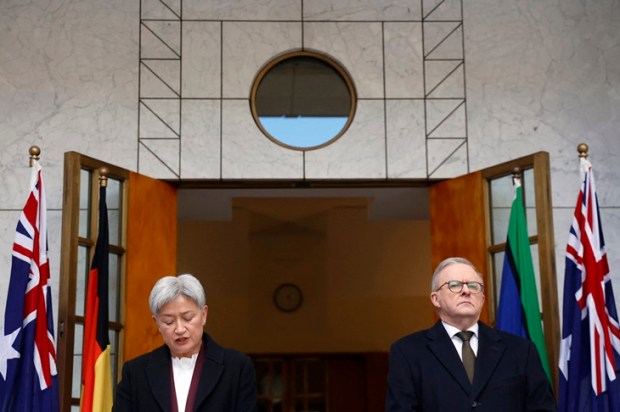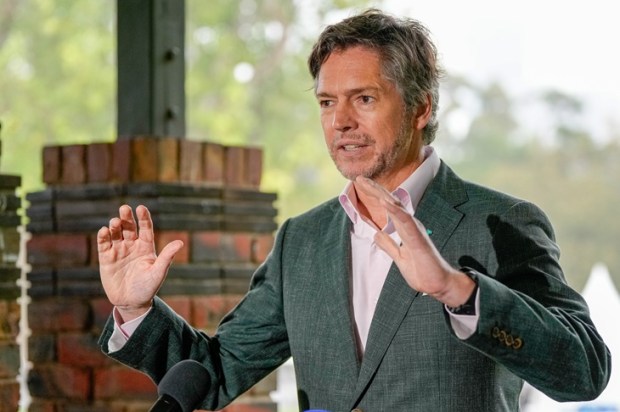Hauling icebergs to Africa: could a bizarre plan to get drinking water actually work? It’s a headline so odd it warranted a second look. Parody? Click-bait? Fake news?
No. It’s just a really dumb idea that appears to resurrect itself every few years. At least the article in Nature had the cheek to add, ‘Transporting water trapped in icebergs to drought-plagued regions is pooh-poohed by scientists.’
According to the article, bottled water company Svalbarði is playing on the salvation vibe by shipping iceberg-harvested water to high-profile customers with a saviour-complex in various cities – including Sydney.
‘Taste the Arctic to Save the Arctic,’ its website croons, promoting the supposed carbon neutrality of the water, which sells online for €99.95 (US$107) for a 750-millilitre bottle.
This is not a joke.
Ed Kean, a fifth-generation fisherman known as the ‘iceberg cowboy’, and others like him, head out to capture chunks of ice and on-sell them to companies. As Nautilus reports:
This is when iceberg cowboys head to sea. These rough-and-tumble mariners earn their living wrangling icebergs – sometimes to subdue and capture the leviathans, other times to herd the ice in new directions. They are undaunted by warnings issued by the International Ice Patrol. To that end, the brave seafarers make bad role models for academics interested in icebergs and ship captains navigating the North Atlantic. The iceberg cowboys, however, give us a hint of what it will take to harvest icebergs if we are ever going to use them to save the planet. They show us that these frozen beasts are not entirely unapproachable. […] As the iceberg cowboy tells it, his family used to harvest ice from icebergs to cool fish that they brought up to the plants in Labrador. In the 1970s they had the ice tested at Memorial University of Newfoundland to ensure it was safe. In the process, they learned that it was exceptionally pure. In the 1990s Kean began harvesting ice commercially, and he has been at it ever since. […] Icebergs “taste like water should taste,” he explains. That’s why they are worth wrangling. According to Kean, he and his wife drink several liters of iceberg water a day and his mother “will only drink iceberg water.”
He can sell over a million litres of iceberg water a year.
Many tourists have tried a low-budget version of this while on cruises in Antarctica. During tours, walking along the ice-riddled foreshore, they are routinely taken to the edge of a small glacier. Avoiding the guano, they shovel ice chunks into empty Mount Franklin water bottles and leave them in their luggage. No doubt these spend years sitting in the freezer, riddled with flecks of dirt. A novelty, for sure – but an unlikely beverage.
‘Smooth Canadian vodka. Iceberg Vodka is handcrafted in small batches from real Canadian icebergs – the purest source of water on the planet.’
This product is ‘made the hard way’ from 20,000-year-old icebergs wrangled by our mate Captain Ed. ‘Once the annual harvest is complete and the ice is melted down to water, it’s blended with a triple distilled neutral spirit and charcoal filtered. The final result is a gluten-free vodka spirit that’s crystal clear in the glass with delicate aromas of citrus.’
My glass of tank water is ‘crystal clear’ too. I wonder if anyone has done a carbon footprint comparison on virtuous iceberg vodka versus whatever the Russians are drinking in Siberia?
‘The Iceberg Cowboy will try to harvest as many as possible before they melt away, catching some in nets, or with the giant crane attached to his boat. Sometimes he’ll simply blast away at one with his shotgun.’
While this sort of thing appears to be a bit of clever marketing aimed at the Teal demographic, there are semi-serious discussions open about capturing monster-sized icebergs. These devout believers in the iceberg oasis argue that humanity should waste fuel dragging lumps of ice to various remote ports as a quick-fix for dry cities.
Their plan appears to involve moving an iceberg into the Antarctic Circumpolar Current and speed-racing it toward South Africa. Assuming the iceberg survives the trip – which it almost certainly won’t – the cost will come in at around $150 million per berg and require up to 20 ships to achieve.
Cape Town officials have been quoted as being ‘less than enthused’.
UAE consultancy the National Advisor Bureau wasted many inches of the world’s media columns floating the idea of sailing bergs near Western Australia. Most government officials view this proposal as pure fiction after all, who wants to see giant icebergs being towed through the world’s busiest shipping lanes?
Australia obviously drank too much vodka during the 70s and 80s, because we momentarily flirted with iceberg-towing. No prizes for guessing it was Western Australia that wanted to pop a few ice cubes in its drinking water.
No one needs to tow icebergs around because dams, wells, and desalination projects work just fine.
Thieving icebergs is a dumb idea, so what’s my point?
Technical advances used to pride themselves on being superior to former technologies while streamlining the use of resources. Many were boring in their genius as they were designed to work, not take the lead in the Met Gala.
These days, the garnish of ‘oh-my-god-apocalypse’ has led to an engineering age addicted to spectacle. It’s all about ‘bold visions’ to ‘save the world!’ The more ridiculous, the better.
Attached to these unworkable pieces of showmanship are enormous public grants and R&D investments from the government which prop up entire industries circling around the drain of nonsense.
In our iceberg example, there was talk of producing huge geotextile sheets or ‘a skirt’ to ‘minimise the melting’ along with using giant sky-sails. Even the creation of these simulations keeps people employed.
This is equivalent to the noise of gossip rather than the great works of fiction produced by humanity. The problem is not that wasteful ideas exist – it is how much public money is being spent on them. People often wonder why the West is broke despite huge volumes of cash being carted off as tax. As battery farms waste energy, climate change projects waste money.
We are living in an age of scientific indulgence rather than advancement. This is not the second coming of the Victorian era in revolutionary science. The great minds of the past would be laughing at us, chuckling through the cigar smoke at a generation that has forgotten how to build dams and thinks the solution is to scavenge icebergs.
As foolish as iceberg harvesting sounds, at least it’s harmless. The real folly can be found in the endless pursuit of wasteful, complicated (un)renewable energy systems that do everything except deliver efficient, cheap, reliable, and long-lived power. Weather-dependent energy to survive an age of, uh, weather instability. Sounds smart. In this pursuit, NSW Liberal Matt Kean is our chief iceberg wrangler, selling over-priced, theatrical Net Zero policy wares to the swooning, middle-aged doctors’ wives (who are all going to vote Teal anyway). What a farce.

























